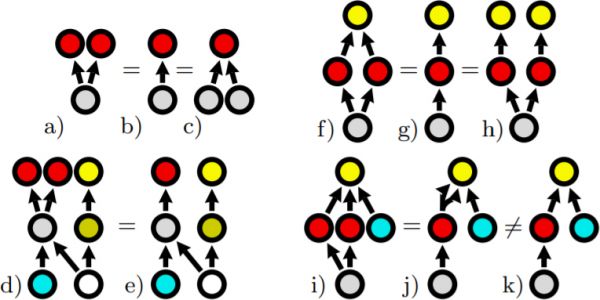aufderheide2012mesoscale
Mesoscale symmetries explain dynamical equivalence of food webs
Helge Aufderheide, Lars Rudolf and Thilo Gross
New J. Phys. 14, 105014, 2012
A present challenge in complex systems is to identify mesoscale structures that have distinct dynamical implications. In this paper we present a detailed investigation of a previously observed dynamical equivalence of certian ecological food webs. We show that this equivalence is rooted in mesoscale symmetries that exist in these webs. Certain eigenvectors of the Jacobian describing dynamical modes of the system, such as specific instabilities or responses to perturbations, localize on these symmetric motifs. On the one hand this means that by removing a symmetry from the network one obtains a system which has identical dynamics except for the removal of the localized mode. This explains the previously observed equivalence. On the other hand it means that we can identify dynamical modes that only depend on the symmetric motif. Symmetric structures thus provide an example for mesoscale network motifs having distinct and exact implications for the dynamics.

Figure 1: Examples for food webs that differ only by dynamical modes localized inside their mesoscale symmetries. Different
colours denote different orbits. Two systems are marked as dynamically equivalent (“=”) if the spectra of their Jacobian
matrices are identical up to the eigenmodes characterizing the mesoscale effects inside the symmetries. If nodes of a symmetry have a common prey or predator with a node outside the symmetry, as e.g. in i), the generalized parameters of the common prey or predator in the reduced network are weighted which is shown in j) as a double-headed link.